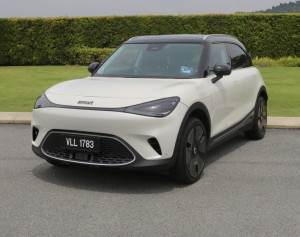Tesla has yet to say whether wraps will be offered for the Cybertruck specifically. — Bloomberg
NEW YORK: Tesla Inc has designed its stainless-steel Cybertuck to be something special: the first vehicle for the masses that doesn’t require paint. It’s no easy feat.The only other company to come close, DeLorean, sold just 9,000 cars before filing for bankruptcy in 1982.
Once Tesla starts Cybertruck deliveries, it may have a devised a cheat that DeLorean couldn’t: colour wraps.
A decorative film applied to the vehicle’s exterior – and a lucrative upsell Tesla has been trying out in California – could soften the edges of a vehicle seen as too harsh for mainstream buyers.
“It looks a lot more attractive with these wraps on it,” said Jessica Caldwell, head of insights for Edmunds, while scrolling through images of Cybertruck test vehicles spotted with custom prints.
Across the auto industry, there’s been a notable shift towards boxy “masculine” automotive designs, compared to the bubble-shaped sport utility vehicles or SUVs that have long dominated, Caldwell said.
Tesla just went “maybe a bit too far”.
Wrapping vehicles in colourful coatings is nothing new.
Wraps can make a Ferrari look like a chrome-plated bullet or transform a sketchy work van into a luminous billboard for lawn-care services.
While some people think the Cybertruck looks like a refrigerator on wheels, others will see a blank canvas.
Most wraps require custom installations performed by third-party garages. In an industry first, Tesla quietly started offering in-house wraps for the Model 3 and Model Y in October – a possible trial run ahead of the first Cybertruck deliveries.
The company has yet to say whether wraps will be offered for the Cybertruck specifically, but when asked in 2020 whether the truck would be available in colour, the co-founder and chief executive officer of Tesla Elon Musk replied, “You will be able to wrap it in any colour or pattern.”
Car wraps come in two varieties: form-fitted vinyl wraps and colour-infused paint protection film (PPF).
Vinyl wraps are cheaper – typically in the range of US$3,000 to US$5,000 – and offer more options for customisation.
PPF is nearly twice as expensive but provides greater durability and protection.
The wraps Tesla started offering for the Model 3 and Model Y are of the latter variety – a high-end film made to resist grime and able heal itself after minor scratches.
The company said damage caused by some automated car washes, for example, typically vanishes within 48 hours.
Tesla charges US$7,500 to US$8,000 to wrap the Model 3 and Model Y, with a choice of seven mellow colours, from “Satin Rose Gold” to “Stealth Black”.
The company hasn’t mentioned the possibility of customisation.
However, Cybertrucks have been spotted with at least 10 detailed patterns and logo designs that would typically only be possible in vinyl.
Those include a pair of neon Cybertruck logos sprayed across the doors, graffiti-style.
There are Cybertrucks humorously made to look like a Ford F-150 and a Toyota Tundra; and several unusual takes on camouflage.
The idea of in-house Cybertruck wraps –Cyberwraps, if you will – may have been part of Tesla’s plan from the start.
When the Cybertruck was being designed, Tesla had just undergone an excruciating production ramp-up for the Model 3 that, according to Musk, nearly bankrupted the company. Many problems originated in the paint shop.
Automotive paint is expensive and finicky.
It clogs, coagulates, ripples and peels if the mix of chemicals isn’t perfect.
It’s also the biggest source of pollution from car factories, responsible for over half of carbon dioxide emissions and more than 95% of toxic volatile organic compound emissions.
With the Cybertruck, Tesla has a chance to forgo the paint shop altogether.
In-house wraps could also be highly profitable.
The materials aren’t expensive, and most of the cost is tied to the tedious hours of labour required to apply them.
The film must be stretched, smoothed, snipped and tucked precisely around every headlight, door handle, logo and trim piece.
The Cybertruck’s expansive flat panels seem purpose-built to make that work a breeze.
Profit from those US$8,000 wraps, along with the US$12,000 price tag on Tesla’s FSD driver-assistance features, could help keep the Cybertruck base price lower for value-oriented buyers.
Capturing multiple segments of the truck market will be key if Tesla is to reach its sales target of 250,000 trucks a year.
“You have to invent not just the car but the way to make the car,” Musk had said earlier.
“So, the more uncharted the territory, the less predictable the outcome.”












